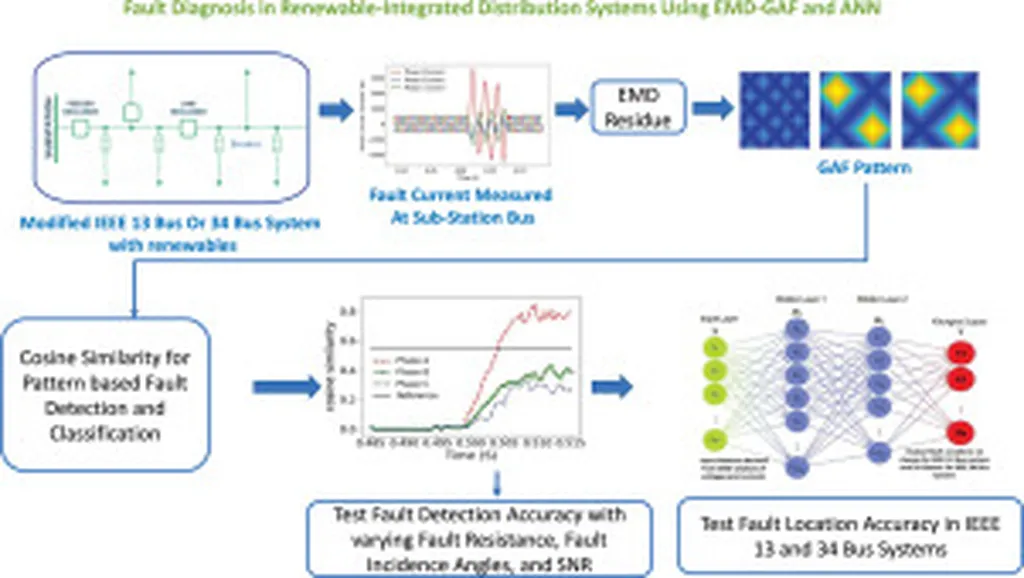In the ever-evolving landscape of industrial automation and intelligent technologies, ensuring the stable operation of rotating machinery is paramount. Traditional fault diagnosis methods, often reliant on expert knowledge and basic signal processing, are increasingly struggling to keep pace with the complexity of modern industrial environments. Enter a groundbreaking study published in *Jixie qiangdu* (which translates to *Mechanical Strength*), led by LI Wenzan, which introduces a novel framework that could revolutionize fault diagnosis in the energy sector and beyond.
The research, which leverages Gram angular field (GAF) image encoding and an enhanced Gated WaveNet (GWaveNet) architecture, aims to address the limitations of conventional diagnostic approaches. By transforming one-dimensional bearing vibration signals into two-dimensional images, the method preserves temporal dependencies and dynamic signal variations, providing a more comprehensive view of machinery health.
“Traditional methods often fall short in complex operating conditions and varied fault types,” explains LI Wenzan. “Our approach enhances the robustness and training efficacy of the model, making it more adaptable to real-world industrial environments.”
To tackle the issue of data imbalance, the researchers employed techniques such as window segmentation, noise augmentation, and synthetic minority over-sampling technique (SMOTE). These methods increase sample diversity, thereby improving the model’s ability to recognize different fault patterns. The enhanced GWaveNet architecture, which integrates convolutional layers, residual connections, and multi-scale feature extraction modules, further strengthens the network’s diagnostic capabilities.
The study’s validation on the Case Western Reserve University (CWRU) public dataset demonstrated high diagnostic accuracy under various operating conditions, including normal, inner race fault, and outer race fault scenarios. This robustness and generalization performance are crucial for the energy sector, where machinery downtime can lead to significant financial losses and operational inefficiencies.
The implications of this research are far-reaching. As the energy sector continues to embrace digital transformation, the ability to accurately and efficiently diagnose faults in rotating machinery will become increasingly important. The proposed framework not only enhances diagnostic accuracy but also paves the way for more intelligent and autonomous industrial systems.
“Our goal is to make industrial operations more efficient and reliable,” says LI Wenzan. “By improving fault diagnosis, we can reduce downtime, minimize maintenance costs, and ultimately contribute to the overall stability and productivity of industrial processes.”
As the energy sector grapples with the challenges of maintaining aging infrastructure and integrating new technologies, advancements in fault diagnosis will play a pivotal role in ensuring operational excellence. The research published in *Jixie qiangdu* offers a promising solution, one that could shape the future of industrial automation and intelligent technologies.
In a world where every moment of downtime translates to lost revenue and productivity, the ability to predict and prevent faults in rotating machinery is not just an advantage—it’s a necessity. The work of LI Wenzan and their team represents a significant step forward in this critical field, offering a glimpse into a future where industrial operations are more resilient, efficient, and intelligent than ever before.

